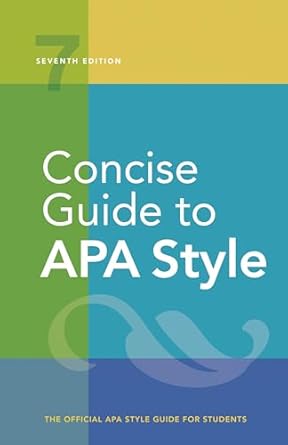[toc]
understanding gender identity key definitions insights
Concise Guide to APA Style: 7th Edition (OFFICIAL)
Page 89 Review
Understanding Gender Identity and Sexual Orientation: A Critical Review
This excerpt delves into the complex and often misunderstood concepts of gender identity and sexual orientation, emphasizing the importance of accurate and inclusive language in research and discourse.
It challenges traditional assumptions and promotes a more nuanced understanding of human experiences.
The Ongoing Debate: Biology vs.
Acculturation
The passage begins by acknowledging the ongoing debate surrounding the origins of sexuality:
“Researchers continue to examine the extent to which sexuality or sexual orientation—attraction to sex, gender, or some combination of both—is a biological and/or acculturative phenomenon.”
This highlights the lack of definitive answers and the need for continued research to explore the interplay between biological factors and environmental influences in shaping sexual orientation.
Defining Gender Identity: A Personal and Profound Sense
The text then provides a comprehensive definition of gender identity:
“Gender identity is a component of gender that describes a person’s psychological sense of their gender.
Many people describe gender identity as a deeply felt, inherent sense of being a boy, a man, or male; a girl, a woman, or female; or a nonbinary gender (e.g., genderqueer, gender-nonconforming, gender-neutral, agender, gender-fluid) that may or may not correspond to a person’s sex assigned at birth, presumed gender based on sex assignment, or primary or secondary sex characteristics (APA, 2015a).”
This definition emphasizes the internal and deeply personal nature of gender identity, distinguishing it from biological sex.
It also acknowledges the existence of a spectrum of gender identities, including nonbinary identities.
Crucially, the excerpt stresses the universality of gender identity:
“Gender identity applies to all individuals and is not a characteristic only of transgender or gender-nonconforming individuals.”
This is an important point, as it challenges the misconception that gender identity is only relevant to transgender or gender-nonconforming people.
Distinguishing Gender Identity from Sexual Orientation
The passage explicitly differentiates between gender identity and sexual orientation:
“Gender identity is distinct from sexual orientation (see Section 3.8); thus, the two must not be conflated (e.g., a gay transgender man has a masculine gender identity and a gay sexual orientation, a straight cisgender woman has a feminine gender identity and a straight sexual orientation).”
This clarification is essential to avoid confusion and promote accurate understanding.
The example provided helps to illustrate the difference between the two concepts.
The Importance of Accurate Reporting
The excerpt highlights the importance of accurate and explicit reporting of gender identities in research:
“Authors are strongly encouraged to explicitly designate information about the gender identities of the participants making up their samples (e.g., whether participants are transgender, cisgender, or other gender identities) rather than assuming cisgender identities.”
This is crucial for ensuring that research findings are representative and applicable to diverse populations.
The text then defines key terms related to cisgenderism and genderism:
“Cisgender refers to individuals whose sex assigned at birth aligns with their gender identity (APA, 2015a).
Cisgenderism or cissexism refers to the belief that being cisgender is normative, as indicated by the assumption that individuals are cisgender unless otherwise specified (both terms are in use).
Genderism refers to the belief that there are only two genders and that gender is automatically linked to an individual’s sex assigned at birth (American Psychological Association of Graduate Students, 2015).”
Understanding these terms is essential for recognizing and challenging discriminatory practices and biases.
Understanding Transgender and Gender-Nonconforming Identities
The passage provides a definition of transgender:
“Transgender is used as an adjective to refer to persons whose gender identity, expression, and/or role does not conform to what is culturally associated with their sex assigned at birth.”
It also emphasizes the diversity within the transgender community:
“Some transgender people hold a binary gender, such as man or woman, but others have a gender outside of this binary, such as gender-fluid or nonbinary.
Individuals whose gender varies from presumptions based on their sex assigned at birth may use terms other than “transgender” to describe their gender, including “gender-nonconforming, “genderqueer,” “gender-nonbinary,’ “gender-creative,’ “agender,’ or “two-spirit,” to name a few. (Note that “two-spirit” is a term specific to Indigenous…”
This recognition of the multitude of terms and identities used by individuals whose gender differs from societal expectations is vital for fostering inclusivity and respect.
Understanding “two-spirit” as specific to indigenous communities demonstrates cultural sensitivity.
Conclusion
This excerpt serves as a valuable resource for understanding the complexities of gender identity and sexual orientation.
By providing clear definitions, emphasizing the importance of accurate reporting, and challenging discriminatory assumptions, it contributes to a more informed and inclusive dialogue.
Buy full ebook for only $18: https://www.lulu.com/shop/american-psychological-association/concise-guide-to-apa-style-7th-edition-official/ebook/product-rmzpq54.html?page=1&pageSize=4
Understanding Gender Identity Key Definitions Insights
Read more: Analyzing Statistical Tables: ANOVA & Regression Insights

